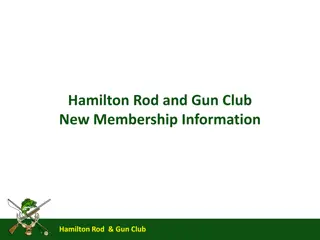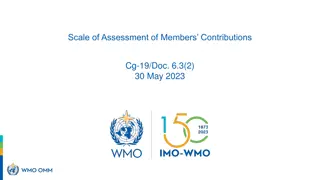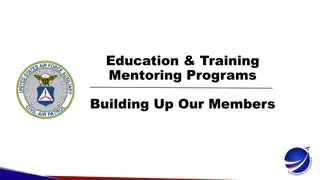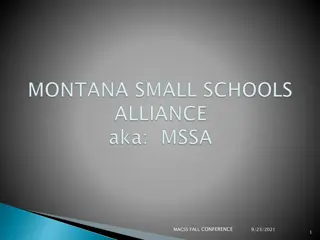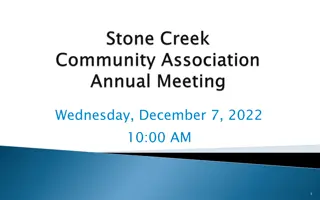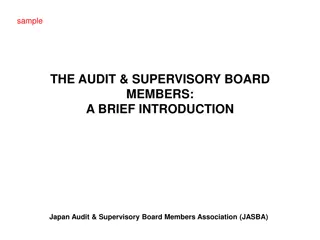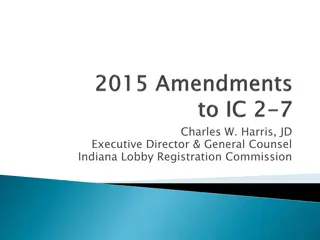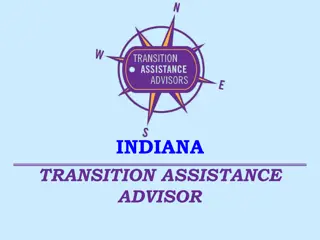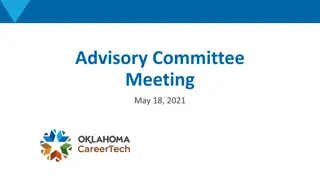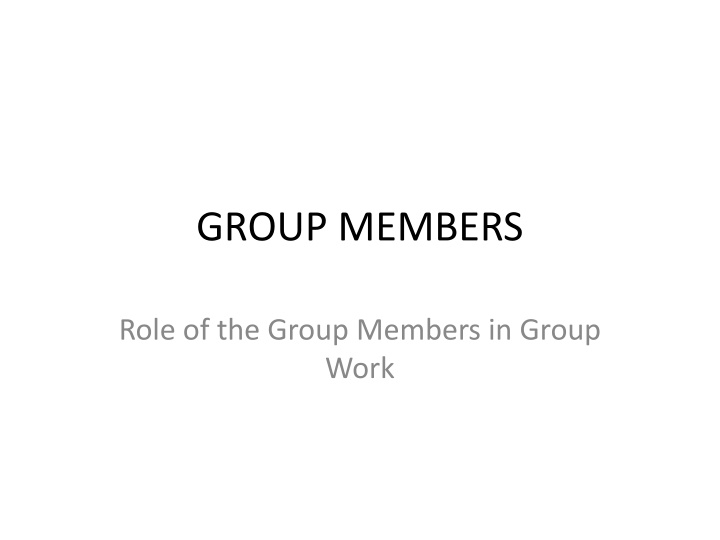
Group Dynamics and Member Roles in Group Work
Explore the various roles of group members in group work, including facilitative/building roles, maintenance roles, and blocking roles. Learn how these roles contribute to group functioning and dynamics. Discover the importance of role fulfillment in effective group collaboration.
Download Presentation

Please find below an Image/Link to download the presentation.
The content on the website is provided AS IS for your information and personal use only. It may not be sold, licensed, or shared on other websites without obtaining consent from the author. If you encounter any issues during the download, it is possible that the publisher has removed the file from their server.
You are allowed to download the files provided on this website for personal or commercial use, subject to the condition that they are used lawfully. All files are the property of their respective owners.
The content on the website is provided AS IS for your information and personal use only. It may not be sold, licensed, or shared on other websites without obtaining consent from the author.
E N D
Presentation Transcript
GROUP MEMBERS Role of the Group Members in Group Work
2. Members roles & Group Dynamics A role is conceived as dynamics structure within an individual (based on needs, cognition, and values), which usually comes to life under the influence of social stimuli or defined positions . The demonstration of role is based on the individual s expectation of self and others and the interactions one has in particular groups and situations. For examples, a reflective and introverted person might take the role of a group observer in an active counseling group.
Types of role: One way to conceptualize most roles in groups is to view as primarily functioning in one of three: FACILITAITVE/BUILDING ROLE MAINTENANCE ROLE BLOCKING ROLE Facilitative role/building role: is one that adds to the functioning of a group in a positive and constructive way. Members who take on such a role may serve as: Facilitator or encourager: in this position, individuals play the role of a counselor helper. They make sure everyone feels comfortable. Their motive often is keep the focus off themselves.
This role mainly focuses on helping everyone feel like a part of the group. Those members who function in this Initiators of actions & ideas Information seekers Opinion seekers coordinators Orientor's Evaluators Recorders way help the group develop like a part of the group develop while keeping conflict to a minimum.
A maintenance role: is one that contributor to the social emotional bonding of members and the overall well-being of the group. When interpersonal communication in the group is strained, there is a need to focus on relationships. Persons who take on such roles are social and emotionally oriented. They express themselves by being: Encouragers, harmonizes, compromisers, commentators, and followers. In group maintenance, group members are encouraged to openly express both positive and negative feelings, supportive responses to members concerns and contributions, and acceptance of differences .
Blocking role It is essentially an anti group role. Individuals who take this role act as: Aggressors, blockers, dominators, recognition seekers, and self- righteous moralists.
Problems in carrying out roles Sometimes there are problems in the fulfillment of roles. Both internal & external factors contribute to these problems, and there is seldom a simple cause. Four major forms of role transition. In role collision: there is a conflict between the role an individual plays in the outside world (such as being passive observer) and the role expects within the group (such as being an active participant). Role incompatibility, a person is given a role within the group (as being the leader) that he or she neither wants nor is comfortable exercising.
Role Confusion: occurs when a group member (s) simply do not know what role to perform. This often happens is leaderless group where members do not know if they are to assertive in helping to establish an agenda or to be passive and just let the leadership emerge. Role transition: a person is expected to assume a different role as the group progresses but does not feel comfortable doing so.

